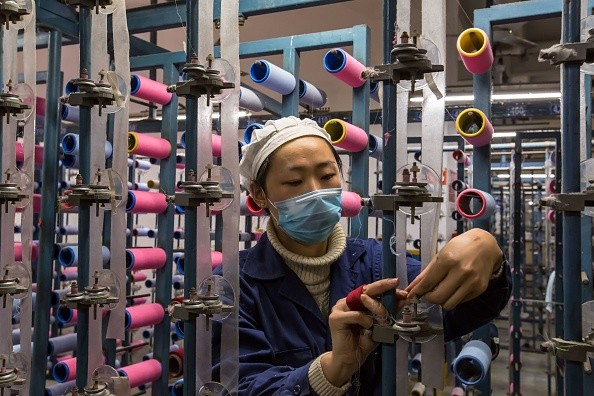The country's manufacturing sector has expanded at the start of year, its fastest pace in two years, according to the results of a survey released by government on Wednesday, Feb. 1, the Associated Press reported.
China countered the economic slowdown by heavy spending and increased bank lending and real estate boom which drove its economy to a 6.7 percent growth in 2016.
According to purchasing managers index of the National Bureau of Statistics (NBS), the country's manufacturing grew at 51.4 on a 100-point scale. Expansion is indicated by points above 50. The record was slightly lower than the 51.7 points posted in November last year.
The country's economic growth is expected to weaken this year as regulators are set to address the country's debt issues and the rising housing costs, analysts said. The International Monetary Fund has estimated China's growth to slow to 6.5 percent this year.
A report by Julian Evans-Pritchard of Capital Economics, however, said that latest data show "relatively strong start to the year."
"The more important question is whether or not the current strength will be sustained," Evans-Pritchard said. "We doubt that it will be given how reliant the recent recovery has been on support from monetary and fiscal policy that is now being withdrawn."
The decline in global demand for Chinese products and slowing economic activity at home has affected Chinese manufacturers, the report said.
Compared with 2015, China's exports decreased by 7.7 percent last year and retail sales slid to 9.6 percent from 10.6 percent in the previous year.
To prevent the sharp decline, the Chinese government repeatedly infused credit, which has delayed efforts to reduce dependence on trade and debt-supported investment.
Construction spending also dropped as the government tightened lending, which also affected demand for steel and manufactured products.
Chinese manufacturing is valued by other Asian economies which supply raw materials and industrial components, as well as by countries such as Australia and Brazil, which import iron ore, oil and other commodities from China.
A statement released by National Bureau of Statistics and the China Association for Logistics and Purchasing, quoted economist Zhang Liqun as saying that some indicators for new orders and other factors slightly decreased in January, but "industrial operations remain in the boom range."



























